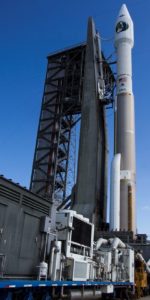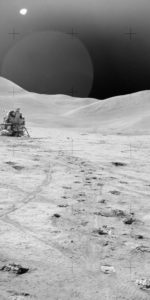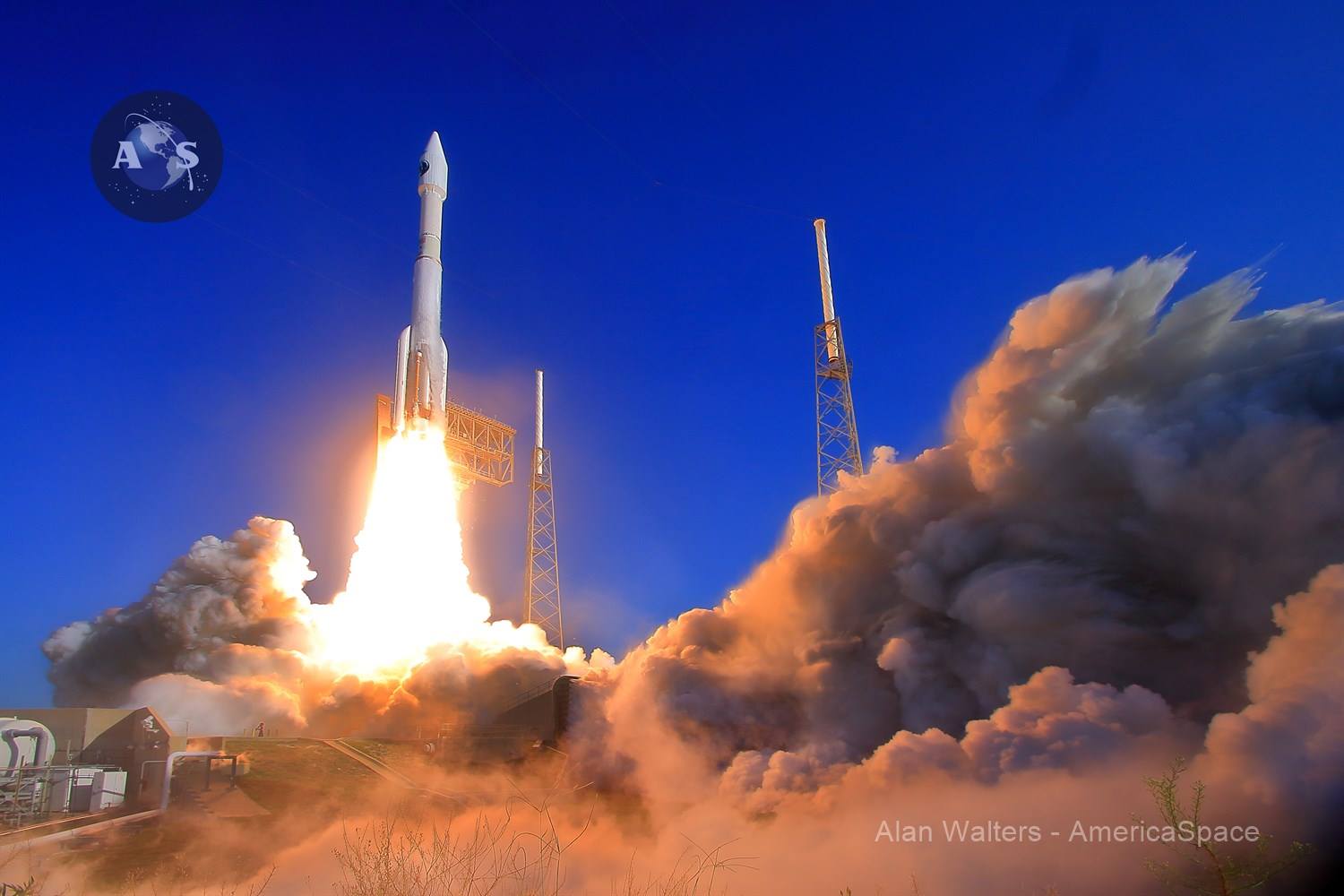
The successful launch today of the 11,000-lb National Reconnaissance Office NRO 61 geosynchronous orbit, real-time relay spacecraft has given the U.S. a major new capability to speedily forward high-resolution imagery and other intelligence data from lower orbiting platforms to processing and distribution centers on the ground.
NRO 61’s nearly 200-ft-tall United Launch Alliance (ULA) Atlas-V 421 rocket, with two 375,000-lb thrust Aerojet solid rocket boosters and its Russian Energomash 860,000-lb thrust liquid oxygen/RP-1 engine, lifted off on 1.61 million lbs thrust from Launch Complex 41 at 8: 37 a.m. EDT, at the opening of a 57-minute launch window.
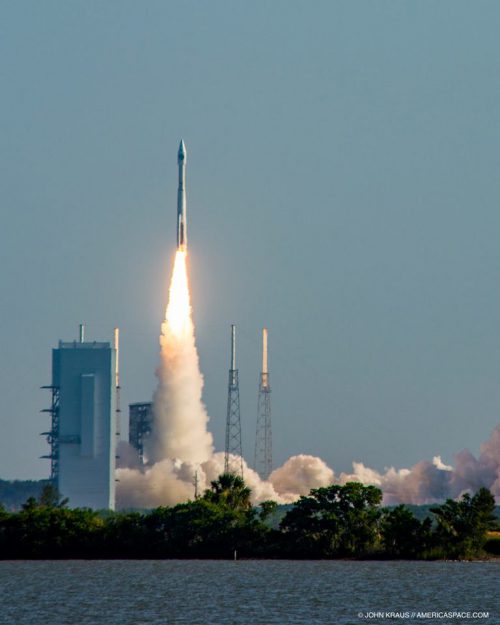
Today’s mission marks the 80th launch from Complex 41 since 1965, including 27 Titan 3/4/and 34D missions and 52 Atlas V launches since 2002. The mission is only the sixth flight of an Atlas-V 421 variant, and the first use of the vehicle by the NRO.
A detailed mathematical analysis by Canadian Ted Mulczan and his global SeeSat L skywatch team members indicates that the Top Secret National Reconnaissance Office NRO-61 spacecraft is the first of a new generation of larger, heavier Block 4 geosynchronous orbit “Quasar” data relay satellites, for real-time transfer of imagery and other data from low-Earth digital imaging and other intelligence satellites (See AmericaSpace prelaunch story July 27).
The Quasar analysis indicate NRO 61’s design “may be optimized to support the next generation heavy electro-optical imagery intelligence satellites of KH-11 lineage,” Moltzan tells AmericaSpace.
The first two of these extremely advanced multispectral “exquisite imaging” block 5 electro optical satellites, with 2-inch resolution, are planned for liftoff in 2018 and 2020.
NRO 61 would mark the fourth block change in the critical relay satellite program since the first Hughes Satellite Data System (SDS) spacecraft was launched in 1975 to relay imagery from the first Lockheed KH-11 digital imaging reconnaissance spacecraft launched in 1976.
After the second of three Centaur upper stage engine firings, the satellite was forecast to be placed into a 35,743 km x 844 km (22,210 mi x 531 mi) geosynchronous transfer orbit. The satellite was separated from the upper stage at this point.
A third Centaur firing dove the upper stage into the Pacific south of Hawaii.
At least three generations of past Satellite Data System relays have been launched since 1975 to support different generations of top-secret digital imaging KH-11 type reconnaissance spacecraft. Some of them were flown in highly elliptical orbits, while others were placed into geosynchronous orbit. They are:
—Block 1 SDS design: At least seven Hughes, 980-watt Block 1 satellites were used to support relay between 1976-1987.
They were all launched by Titan 3 rockets from Vandenberg AFB, Calif. The HS-76 drop skirt civilian satcom shared a basic design with each SDS-1 that weighed about 1,300 lbs. According to a well-researched and well-documented Wikipedia briefing on the SDS system, each SDS-1 had 12 channel Ultra High Frequency relay capability. They served by KH-11 regular imaging relay as well as data relay from Lacrosse imaging radar satellites that also relayed through the Tracking and Data Relay System in facilities separate from NASA.
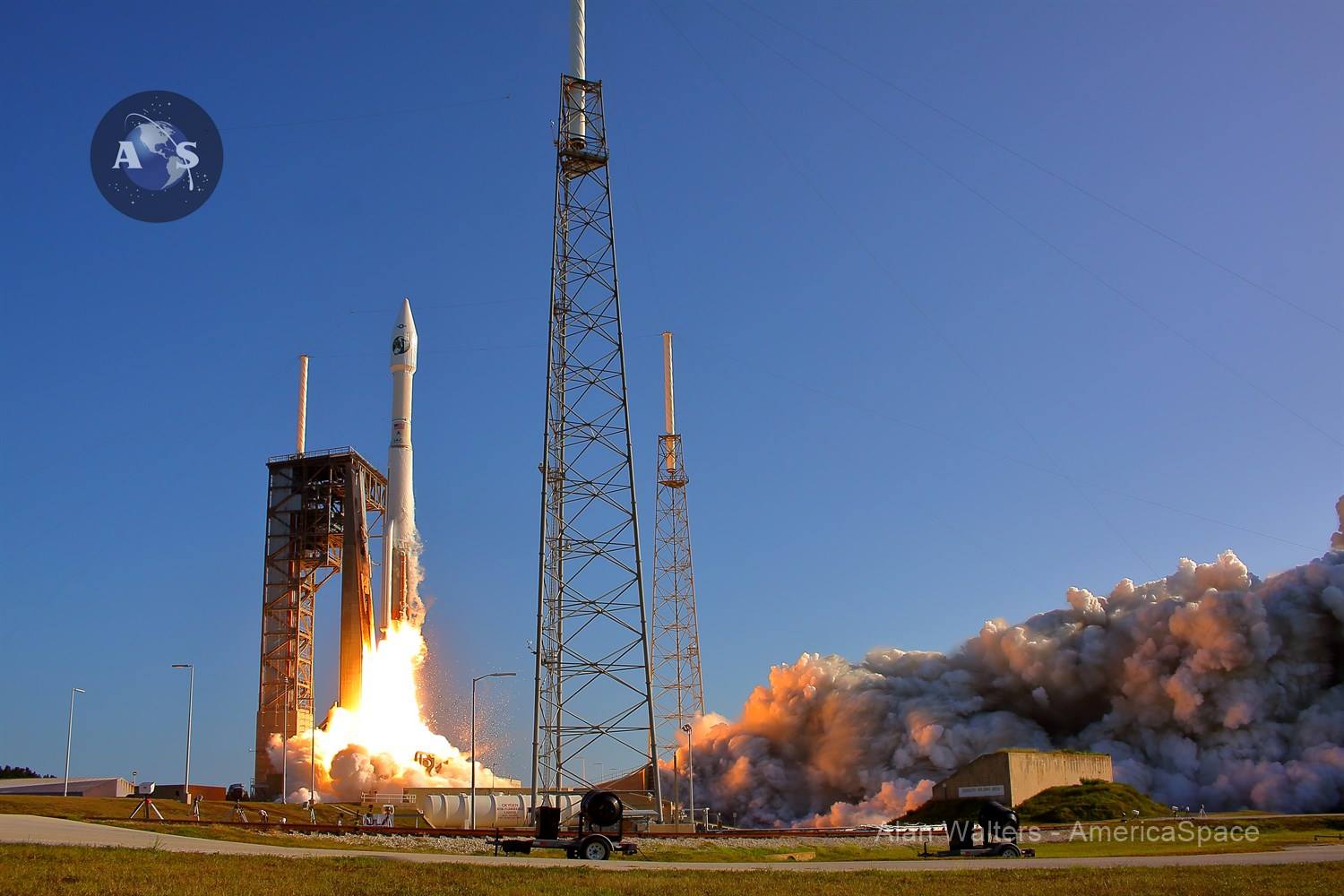
This reporter, based in Washington D.C., with Aviation Week and Space Technology in 1976, was convinced by Chairman of the Joint Chief of Staff Gen. David Jones not to break the story publicly because of the severe damage it would have on National Security, as the Soviet Union and China had no idea what the KH-11 and SDS were doing, at that time (See AmericaSpace report May 22, 2016).
—Block 2 SDS design: The SDS-2 spacecraft became operational in mid-1989 and involved six relay satellites that operated through 1996. These were much-improved relay satellites serving more than just KH-11 and Lacrosse critical imaging satellites. SDS-2s weighed more than 5,000 lbs, four times heavier than SDS-1s. Most of these were launched by the space shuttle, sometimes two at a time. This also began operation where two relays would work in geosynchronous orbit while two others in each hemisphere would work in highly elliptical orbits.
—Block 3 SDS Design: There have been eight Block 3 satellites between 1998-2014. They were initially launched on Atlas IIAS rockets, but then by Atlas V and Delta IV launchers. Block 3 satellites weighed nearly 4 tons, with much more capability than the previous two relays.
.
Be sure to “Like” AmericaSpace on Facebook and follow us on Twitter: @AmericaSpace
.
Missions » NROL » NROL-61 »



